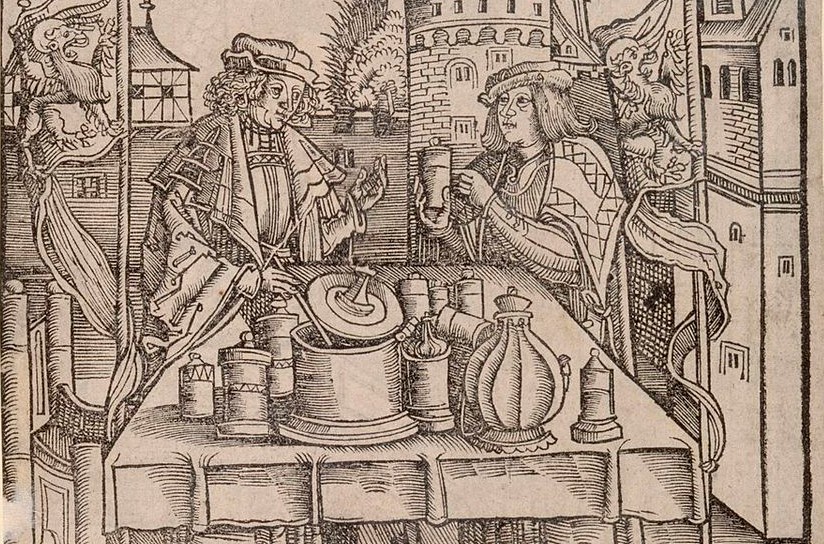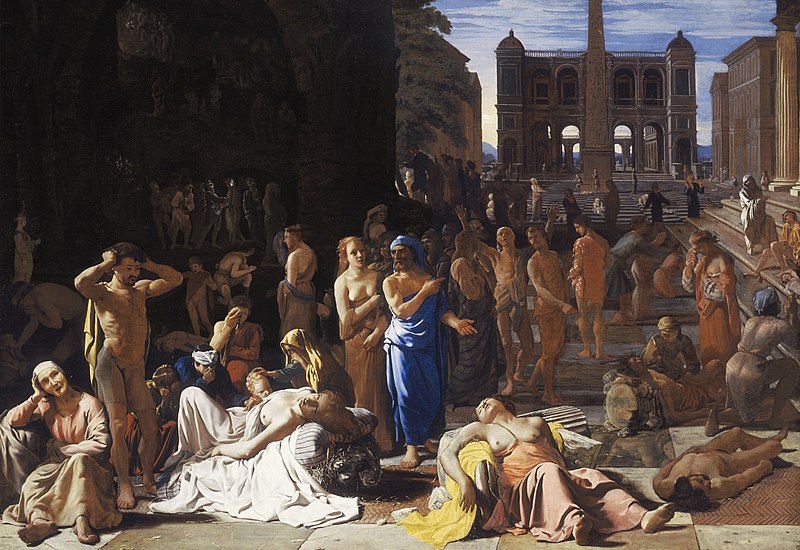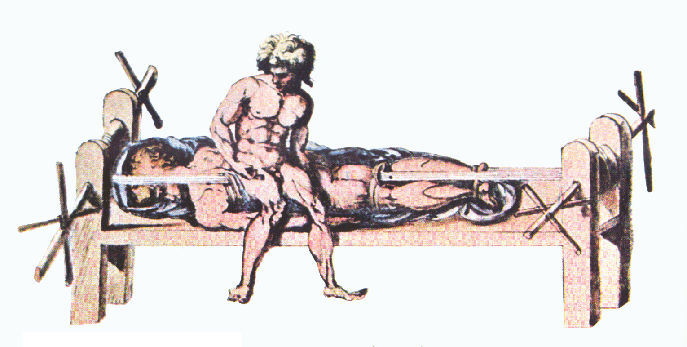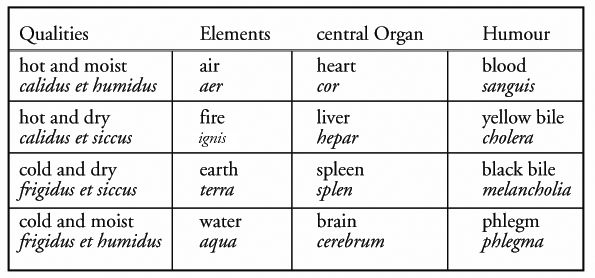Theriac: the Ancient World’s Miracle Drug



Written by Edward Whelan, Contributing Writer, Classical Wisdom
The World Health Organization has declared the COVID 19 outbreak a pandemic. This has caused something of a global panic and has led to a great deal of economic dislocation. This has led to many governments imposing an obligatory system separating many people that may be carrying the virus. People have been obliged to self-isolate in case they inadvertently spread the influenza-like virus.
Quarantine is a series of measures that are taken to isolate those who may be carrying a communicable disease. The concept of social distancing was known to the ancients, and they were aware that it was potentially hazardous to come into contact with infected people. They knew that some diseases are contagious and that measures were needed to protect the healthy population from those who were infected.
Lack of Medicine
The Greeks and the Romans made many scientific advances. However, they were extremely limited in their medical knowledge. They had no real concept of what a virus is or what was bacteria. They were aware that many diseases such as plague were highly infectious.
The Greeks and later the Romans believed that plagues and epidemics came from miasmas (an unpleasant or unhealthy smell or stench) that came from the ground. However, they were also aware that humans could spread these diseases.
There is evidence that ancient cities practiced some form of quarantine. Since they did not have the advanced medicine that we benefit from today, they could only rely on prevention. All ancient societies were aware of the need to separate the healthy from the sick.
In the Ancient World, the population, especially in urban centers, was very prone to epidemics. There are many recorded instances of plagues in the Classical World. The Plague that devastated Athens during The Peloponnesian War, in 430 BC., killed, up to 25 % of the inhabitants. Then the great Antonine Plague in the late 2nd century AD devastated the population and gravely weakened the Roman Empire.
Greek and Roman Quarantine
While there is evidence that city leaders in the ancient world used their powers to enforce quarantines, there is little documented evidence on the exact practice of quarantine. These ancient peoples did not have hospitals as such as they only emerged with Christianity. Civil leaders in Athens and elsewhere would prohibit strangers from entering the city walls. This included traders, merchants and other travelers.
The sick would often be ordered to ‘self-isolate’ and would be expected to stay in their home. As a result, many people would die in their home. However, some communities may have helped to feed the ill in their homes. The need for the quarantine may have been limited by the fact that many people fled the cities when there was a pandemic or outbreak of diseases.
Many Ancient Greeks and Romans, during epidemics, may have sought sanctuary in temples and shrines. Many would flee to the Temple of Asclepius, the Greek God of Medicine, for his protection. Moreover, it is believed, that many people would often receive basic healthcare at these sites. The sick would congregate in these and that helped to quarantine them and keep them separate from the healthy population.
The Ancient quarantines were not only aimed at preventing people from spreading the disease. Goods and products were also believed to have been spreading illnesses. Galen, in the first medical work on Epidemics, believed that bad cereals and grains caused plagues and other infectious diseases. As a result, it seems likely that the civic governments prohibited many foodstuffs and other goods into a city. This may have been effective in some instances, however it may have exacerbated the economic crises that many urban centers experienced during epidemics.

Galen and Hippocrates; Galen of Pergamum, left, with Hippocrates on the title page of Lipsiae (1677), a medical book by Georgii Heinrici Frommanni. National Library of Medicine, Bethesda, Maryland
The Rise of Christianity
After Christianity became the official state religion in the Roman Empire, they developed many charitable institutions. Most historians argue that they built the first hospitals in the Classical World. Here, during epidemics, sick people were able to receive care. These hospitals, which were ubiquitous in the Roman Eastern Provinces, often helped to quarantine the sick and those infected with illnesses.
Medieval Developments
The ancient world, it appears, only practiced a limited form of quarantine. However, their medical ideas influenced other societies who practiced quarantine more rigorously. The Byzantines drew on lessons learned from the past to develop a more sophisticated way of separating the healthy from the unhealthy.
It was the Arabs who learned most from the Greeks and their ideas about separating the infected from the uninfected. The Nestorian sect of Christianity (developed and practiced in Asia Minor and Syria), for instance, translated the works of leading Greeks such as Galen. There was also the Umayyad and Abbasid Caliphate, both of which developed sophisticated quarantine systems, including public hospitals.

Depicting a scene in the hospital at Cordóba, then in Al-Andalus (Muslim Spain), this 1883 illustration shows the famed physician Al-Zahrawi (called Abulcasis in the West) attending to a patient while his assistant carries a box of medicines. SHEILA TERRY / SCIENCE PHOTO LIBRARY
The modern system of quarantine developed in Medieval Europe, especially in Italy, and was influenced in part by the ancients. The idea of isolating people for 40 days was based on ideas derived from Galen in his investigations, but the term quarantine comes from the Italian word “Quaranta”, meaning 40.
The history of quarantine is a long and fascinating one. As we hunker down and self-isolate, let’s keep in mind the ancient wisdom behind the very idea of doing so.

Four Humors Drawing by Granger
If you had assumed that the theory of ‘humours’ had been unanimously relegated to the ‘didn’t work’ shelf of ancient philosophy, then… perhaps you’d be wrong. It appears that Hippocrates’ concept of a four chemical system that affect behavior is enjoying a bit of a revival.
Recently the New York Times posted an article called, “Could Ancient Greek Philosophy Help You Work Smarter and Better”, advocating “Humourism” and apparently it’s making the rounds. For those who want a recap, Humourism or humoralism, conceives that there are four basic fluids in the body; blood, phlegm, yellow bile and black bile, and that different levels of these fluids, or humors, affect our personalities.
While Hippocrates (460 – c. 370 BC) is usually credited with the theory, the concept has more ancient roots, including ancient Egypt and perhaps even Mesopotamia. Specifically, the medical theorist Alcmaeon of Croton (C. 540–500BC) outlined the idea, though with many substances, and the Pre-Socratic Greek philosopher Empedocles (c. 494 – c. 434 BC) believed that there were only four temperaments composed of natural elements like water, air, fire and earth.

Engraving by Peter Paul Rubens, 1638, courtesy of the National Library of Medicine.
Hippocrates, and later Galen (129–201 AD), suggested that if there is any imbalance in these fluids, then temperament is affected. Moreover, The imbalance of humors, or dyscrasia, was thought to be the direct cause of all diseases. The qualities of the humours, in turn, influenced the nature of the diseases they caused. For instance, Yellow bile caused warm diseases and phlegm caused cold diseases. The diseases were all combinations of hot/cold and wet/dry.
It’s important to note that while today we associate temperament with just psychological dispositions, the ancients felt it also referred to bodily dispositions. Indeed, a person’s emotional and behavioral inclinations determined their susceptibility to particular diseases.

A drawing of a Hippocratic bench from a Byzantine edition of Galen’s work in the 2nd century AD
One of the treatises attributed to Hippocrates, On the Nature of Man, describes the theory as follows:
“The Human body contains blood, phlegm, yellow bile and black bile. These are the things that make up its constitution and cause its pains and health. Health is primarily that state in which these constituent substances are in the correct proportion to each other, both in strength and quantity, and are well mixed. Pain occurs when one of the substances presents either a deficiency or an excess, or is separated in the body and not mixed with others.”

Table outlining the temperaments
So, what are the exact four temperaments caused by these unfortunate unbalances? These include:
Blood/Sanguine
Blood was believed to have come from the liver, exclusively. Too much of it resulted in a sanguine nature, which is described as enthusiastic, active, social and extremely talkative. ‘Sanguines’ tend to be extroverted, enjoy being part of a crowd and find being social, outgoing, and charismatic easy to accomplish.
Yellow bile/Choleric
Too much yellow bile resulted in a ‘Choleric’ nature, which was believed to produce aggression. On the positive side, ‘Choleric’ temperaments are described as independent, decisive, goal-oriented, and ambitious. In Greek, Medieval and Renaissance times, they were thought of as violent, vengeful, and short-tempered, though apparently they also make natural leaders… who would have thought?
Black bile/Melancholic
The excess of Black bile was believed to cause depression, and indeed, the word “melancholy” derives from Greek μέλαινα χολή (melaina kholé) meaning ‘black bile’. As a temperament description, Melancholics have a predisposition to be deep thinkers, feelers, analytical and detail oriented. They can be introverted, anxious and reserved… as well as a perfectionist.
Phlegm/Phlegmatic
Phlegm was thought to be associated with apathetic behavior, as can be seen in the word “phlegmatic”. On the upside, they are considered relaxed, peaceful, quiet, easy-going, as well as empathetic. Interestingly, the phlegm of humorism is far from the same thing as phlegm as it is defined today…

18th-century depiction of the four temperaments, Phlegmatic and choleric above, Sanguine and melancholic below
This individualistic system of describing human behavior and temperament was hugely influential. It was not only adopted by the Greeks, but also by Roman and Islamic physicians. In fact, this theory dominated Western medical thinking for more than 2,000 years and dictated the view of the human body among European physicians until at least 1543, when it was first challenged. However, the underlying belief in it continued right through the eighteenth century, as evidenced by practices such as bleeding a sick person or applying hot cups. (Tactics that are still employed in many places in the world even today.)
So, perhaps with that in mind, it isn’t so surprising that folks are looking at this theory of human behavior again.
Lifecoach and author of the aforementioned Times article, Elizabeth Grace Saunders, explained how understanding your own temperament can help your work flow…and goes so far as to provide tips on how your temperament can be best ‘harnessed’.
Sanguines, for instance, need to break projects into bit-sized chunks. Cholerics should trust more in their co-workers and exercise patience. Melancholics are instructed to limit the time they take on each task while phlegmatic are advised to partner with other temperaments…
There is even a quiz that you are welcome to take here before reading her suggestions.
While the description of the personalities, and perhaps even the advise on how to best navigate them, seem quite alluringly accurate, it may be an indication of the Barnum Effect (one of the biases we described not too long ago). That is for you to decide.
Either way, the fact that these ideas have persisted so long may indicate that the Greeks did an excellent job of understanding human personalities…even if the science behind it may not be quite as convincing.